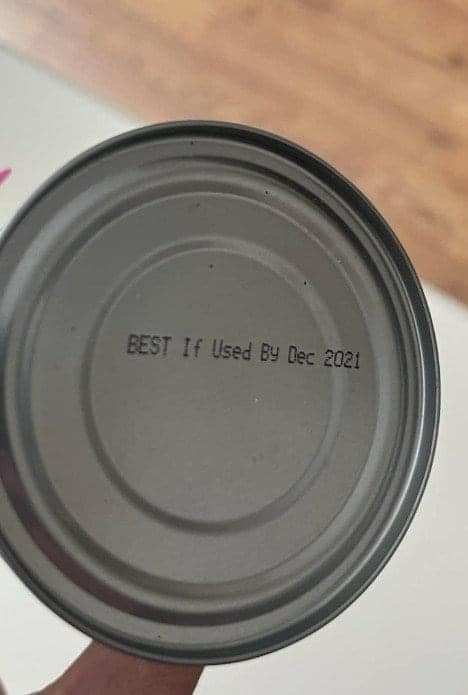What You Should Know About Food Expiration Dates!
Grocery prices keep going up across the country along with inflation. The U.S. Department of Agriculture (USDA) points out that food costs were over 10 percent higher in June 2022 compared to June 2021, causing increases in prices for items like bread, eggs, and meat.
In reaction, shoppers are looking for smart ways to save money.
One of the best methods to make your grocery budget go further is learning how to understand those tricky food labels.
This helps prevent throwing away perfectly good food. A study from the Food Marketers Institute (FMI) in 2011 found that many Americans prefer being cautious about whether their store-bought food is still safe to eat. The research showed that 91 percent of people said they “at least sometimes” tossed out food past its “sell by” date due to safety worries; a quarter admitted they “always did this.”
These views might explain why around 30–40 percent of the nation’s food supply ends up wasted each year, according to a USDA study from 2014.
To give you an idea: That same USDA report estimated a loss of about 133 billion pounds and $161 billion worth of food was wasted in just one year—2010!
If saving money isn’t enough reason for you to learn what those dates on labels mean, think about our planet. Inger Andersen, who leads the United Nations Environment Programme, says that wasting food is a “big factor contributing” to climate change issues like biodiversity loss and pollution,” as stated in the 2021 UNEP Food Waste Index Report.
Why Food Expiration Dates Are So Confusing
You’re not alone if you feel confused by different food labels. A survey done in 2007 among U.S. adults published in the Journal of Food Protection revealed how misunderstood these terms are by most people.
A quick look at the results: Less than half could correctly explain what a “sell by” date means; one-fourth thought it was actually when it should be eaten last safely.
Another big reason for confusion is there’s “no federal rules or standard definitions” regarding these labels says Dana Gunders from Truckee, California; she heads ReFED—a nonprofit focused on reducing waste and loss of foods.
She’s one pushing for uniform government policies on product dates since laws differ between states which adds more confusion.
What Different Food Expiration Dates Mean
The reality is common phrases like “best by,” “use by,” and “sell by” found on your groceries aren’t safety dates at all! Amy Shapiro RD—who runs Real Nutrition practice in New York City—explains manufacturers use these dates mainly as guidance on when their products are at peak quality.
“Best-by and use-by dates focus more on appearance and taste,” says Bill Marler—a Seattle-based attorney specializing in food safety issues.
Here’s an easy list explaining common date terms used on packaging:
Best if Used By/Before
If your item has a label saying “best if used by/before,” it indicates when it will be at its best quality or flavor but doesn’t mean it’s unsafe after that date (it just may not taste great). This label applies across all types including frozen or canned goods.
Use By
A use-by date marks “the final recommended day for using while it’s still top quality,” according to FSIS guidelines. Like other labels mentioned earlier—it doesn’t mean it’s unsafe after this point except with baby formula (more details below). This label usually appears on highly perishable items such as meat or dairy products.
Sell By
The sell-by date tells stores how long they should keep an item available but you can still eat it afterward!
How To Decide When To Toss Your Food
So do you really need throw away stuff once those dates pass? No way! Unless there are signs showing spoilage like bad smells or changes in color/texture according to FDA guidelines!
As mentioned before baby formula stands out here—it shouldn’t be bought or consumed past its use-by date since that’s enforced strictly!
“Up until then declared time frame infant formula will have no less than required nutrients listed plus remain acceptable ” states federal agency info provided earlier!
For pantry staples though? You don’t need worry much! The printed expiration refers only peak freshness but lasts longer than expected! USDA suggests low-acid foods such as canned veggies can stay good two-five years while high-acid ones last around twelve-eighteen months typically speaking!
Sometimes even longer depending conditions too! If cans appear fine without dents/rust stored cool/dry place—they’re safe indefinitely notes agency advice given here today too!!
Lastly freezing options work well too!! As long immediately done right away during highest quality stage meats/casseroles/soups/frozen meals remain safe almost forever because bacteria can’t grow under freezing temps!
Should You Be Concerned With Foodborne Illness?
Being overly careful reading information off packaging does help avoid bacterial infections potentially!! Why? Because keeping something around longer increases chances bacteria multiplying making someone sick explains Marler’s insights shared above!!
“There exists certain infectious doses varying per type bacteria involved!” he continues sharing knowledge gained through experience working within industry field itself!!
He considers listeria—a harmful bacterium linked illnesses—much worse since unlike others grows well even inside refrigerators meaning extended storage raises risk reaching dangerous levels capable harming individuals consuming affected products later down line!!!

Leave a Reply